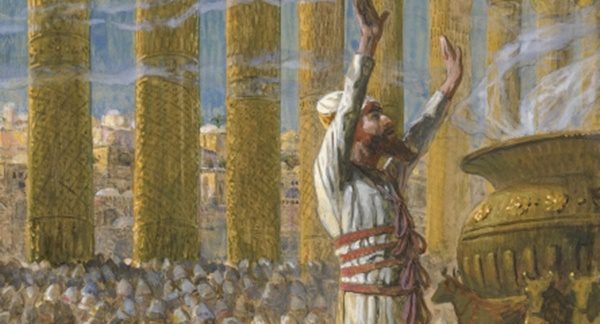In this episode of the RavenCast, Lindsey Paris-Lopez and I discuss the sixth chapter of Anthony Bartlett’s latest book Seven Stories: How to Study and Teach the Nonviolent Bible. You can watch the video of the conversation below, or you can also subscribe and listen to the RavenCast on iTunes, Stitcher Radio, or Podbean.
Show Notes
Introduction
Last week we talked with our two special guests, Tony and Linda Bartlett. We talked with them about the process of writing Seven Stories and about chapter 5, Victim to Vindication. Click here to watch that video or listen to the podcast.
The Temple and Its Deconstruction
The Temple and national politics were always connected in ancient Israel and there are different views within the Bible when it comes to the Temple. In Second Samuel and First Kings, there’s a critique of the Temple and of national politics. The people demand a king. The prophet warns them that a king will force their sons into his wars and they will become just like every other nation. But the people insist, so the prophet relents.
There’s also a critique of the Temple in Second Samuel and First Kings. The ideal time for God’s relationship with Israel was when there was no Temple and God roamed freely with the people. David wasn’t allowed to build the Temple. His son Solomon built it.
First and Second Chronicles tells the story differently. It promotes the Temple and the Kingship from the beginning. David doesn’t build the Temple, but he drafts that plans for it while Solomon builds it.
What is the Function of the Temple?
René Girard helps us see that the function of temples throughout the world was to manage our mimetic rivalries. People are mimetic, that is, we learn what to desire from one another. When we desire the same object and are unwilling or unable to share it, there will be conflict. Sacrifice formed out of this problem as the conflicts were channeled against a scapegoat who was blamed for the conflicts that threatened the people.
On a strictly human level, temples throughout the world were constructed to manage these conflicts. Sacrifice was ritualized and temples were built to discharge conflicts onto a sacrificial victim – whether another person or an animal.
Prophetic Critique of Sacrifice
Many parts of the Psalms and the prophets, including Hosea, Jeremiah, Amos, and Isaiah, critique the practice of sacrifice.
Psalm 50 claims that God doesn’t want a blood sacrifice, but a sacrifice of thanksgiving and a sacrifice that follows through on our promises.
Hosea 6:6 claims that God wants mercy, not sacrifice.
Jeremiah 7 states that God never ordained sacrifice in the first place.
Isaiah 66 states that “Whoever slaughters an Ox is like one who kills a human being. Whoever sacrifices a lamb is like one who breaks a dog’s neck.”
Jesus’ Deconstruction of the Temple
Jesus went to the Temple, not to cleanse it, but to stop its sacrificial function. Jesus’ ministry was about repentance and divine forgiveness of sins. Those were the stated theological functions of the Temple, but Jesus rendered it obsolete by freely forgiving people without them needing to perform blood sacrifice.
Conclusion
Join us next Monday at 10 am Central on AnyMeeting as we discuss the final chapter in Seven Stories: History to Its End.
Image: Solomon Dedicates the Temple, Wikimedia.
Stay in the loop! Like Teaching Nonviolent Atonement on Facebook!












